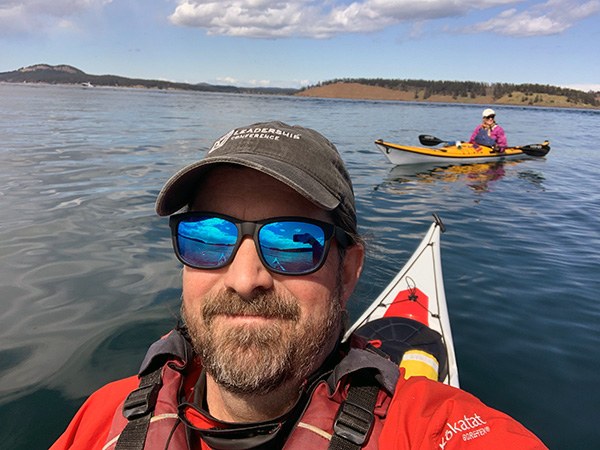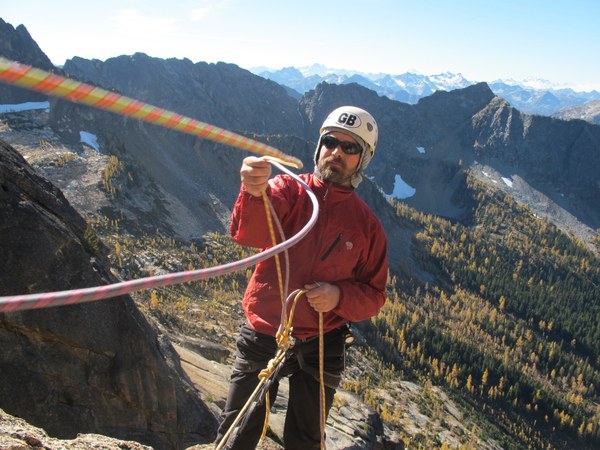
We’ve all been there: a near-miss during a trip. They’re a possibility even with the best safety planning. But rather than categorizing them as bad luck, paying close attention to near-misses will offer insight into why they happen, and how you can prevent them.
To dive deeper into near-misses and their implications, we met with Steve Smith, founder and lead consultant of the risk management firm Experiential Consulting, LLC, and speaker for our Leadership Development Series presentation, “Near-Misses are Telling You Something – Are you Listening?”
Steve has worked in the outdoor industry for over 30 years across a variety of roles, including with The Mountaineers. His career has included leadership roles at Outward Bound and The Student Conservation Association, and serving as the Chair of the Wilderness Risk Management Conference. Steve currently sits on the Northwest Outward Bound School's Board of Directors Safety Committee. Due to his breadth of experience across the outdoor industry, Steve is able to consider all levels within an organization and build a strong risk management culture.
Why are near-misses important as a risk management consideration?
It’s easy for people or an outdoor program to focus on big events – things like broken legs or fatalities. But, those events are actually pretty rare. So if that’s all that we are focusing on, then we’re getting a tiny bit of information about what’s really happening on our adventures. Near-misses are actually happening all the time, and they give us useful information we can use to improve our practices. They’re really a cheap lesson. No one got hurt, there’s no trip to the hospital, no lawsuit. It’s like a winning lottery ticket you’ve already paid for - you can either cash in that lottery ticket, or you can throw it away.
What is a near-miss, and what is it not?
That’s important, because “near-miss” is a term that’s commonly misused. I often hear people say, “I fell into that crevasse, broke my leg, but I was rescued. I feel fortunate to survive this near-miss!” To me that’s not a near-miss just because you survived. That was an accident! You were actually injured. A near-miss would be almost falling into that crevasse.
I’ve heard people use terms like “close call” or “good catch” when describing near-misses. A more official-sounding definition of a near-miss (from OSHA) is “an occurrence that would have been an injury or an incident with a slight difference in either timing or location.” Something that might feel like a near-miss to you and me might be normal for someone in the military, a firefighter, etc. I think it’s important for every organization to define what a near-miss is in their program versus what is just “normal.”
Why are near-misses so under-reported?
It’s pretty common when a trip ends for people to get back to the parking lot and be tired. They don’t want to reflect on the trip too much, or fill out any paperwork. They don’t want to talk about things that almost happened. They don’t want to take the time to ask “were we good today, or were we lucky?” There are a lot of barriers that exist which make it harder for people to report the near-misses. If someone shares a near-miss that they had and is immediately attacked, why would they ever do that again? Why would they ever be vulnerable like that in a community that’s not receptive? I think it’s super important that we, as a community of outdoor adventure folks, get better at creating safer spaces for people to share their lessons learned, to share their near-misses.
What role does blame play as we analyze near-misses?
A source of inspiration in the risk management work that I do is a professor and author by the name of Dr. Sidney Dekker, who teaches safety science. Dekker likes to say that when an incident occurs you can either blame or learn, but you can’t do both. Meaning that if all we do is look back to blame someone, we’re probably arriving at a very simple story instead of challenging ourselves to understand the more complex story. We often blame an individual for something that may have started days or weeks earlier in the systems, planning, route selection, and group dynamics, which may be unrelated to that individual. It’s easy to blame human error when there’s a much larger, complex system that may be at play leading up to that event. A better question might be, “what do we need to do to keep that from happening again?”
 The Beckey Route on Liberty Bell, North Cascades. Photo by Tamara Walker.
The Beckey Route on Liberty Bell, North Cascades. Photo by Tamara Walker.
What do near-misses tell us that a perfect safety record does not?
Think about the Deepwater Horizon oil spill in the Gulf of Mexico in 2010. The BP-operated Macondo Prospect blew up after seven years of perfect safety records leading up to that explosion. That tells us two things. First, they’re obviously not reporting things that are happening. How can you possibly have hundreds of people working on this oil rig out in the middle of the ocean for seven years and not have a single reportable incident? Second, and I think more importantly, they were trying to look good rather than be good. They won a national safety award in the weeks preceding an explosion that killed 11 people and injured 17, and caused an environmental catastrophe. When you suppress incident reporting, you build in a blind spot for your organization and become less safe, despite looking safer.
What is the most important question to ask when faced with a near-miss?
Ask yourself: What’s going to keep this near-miss from happening again? That’s the most important piece. It’s not who, but what - what is going to keep this from happening again? What we’ve described here is not a policy that exists in some manual. It’s really about organizational culture. How we treat each other and how we talk about our adventures and our risk tolerance. How we talk about and with each other after an incident or near-miss. I think a lot of this stuff is not in the reporting system or in the policy manual, or in the waiver people sign. It just comes down to organizational culture and how we care about and take care of each other.
Learn more about Steve and his work at outdoorrisk.com. To delve deeper into why near-misses matter and the importance of reporting them, listen to Steve’s interview Institutional Near Misses on the Sharp End Podcast: thesharpendpodcast.com/episode-62. Steve is also the author of Beneficial Risks: The Evolution of Risk Management for Outdoor and Experiential Education Programs.
This article originally appeared in our Fall 2021 issue of Mountaineer Magazine. To view the original article in magazine form and read more stories from our publication, visit our magazine archive.
 Michelle Song
Michelle Song